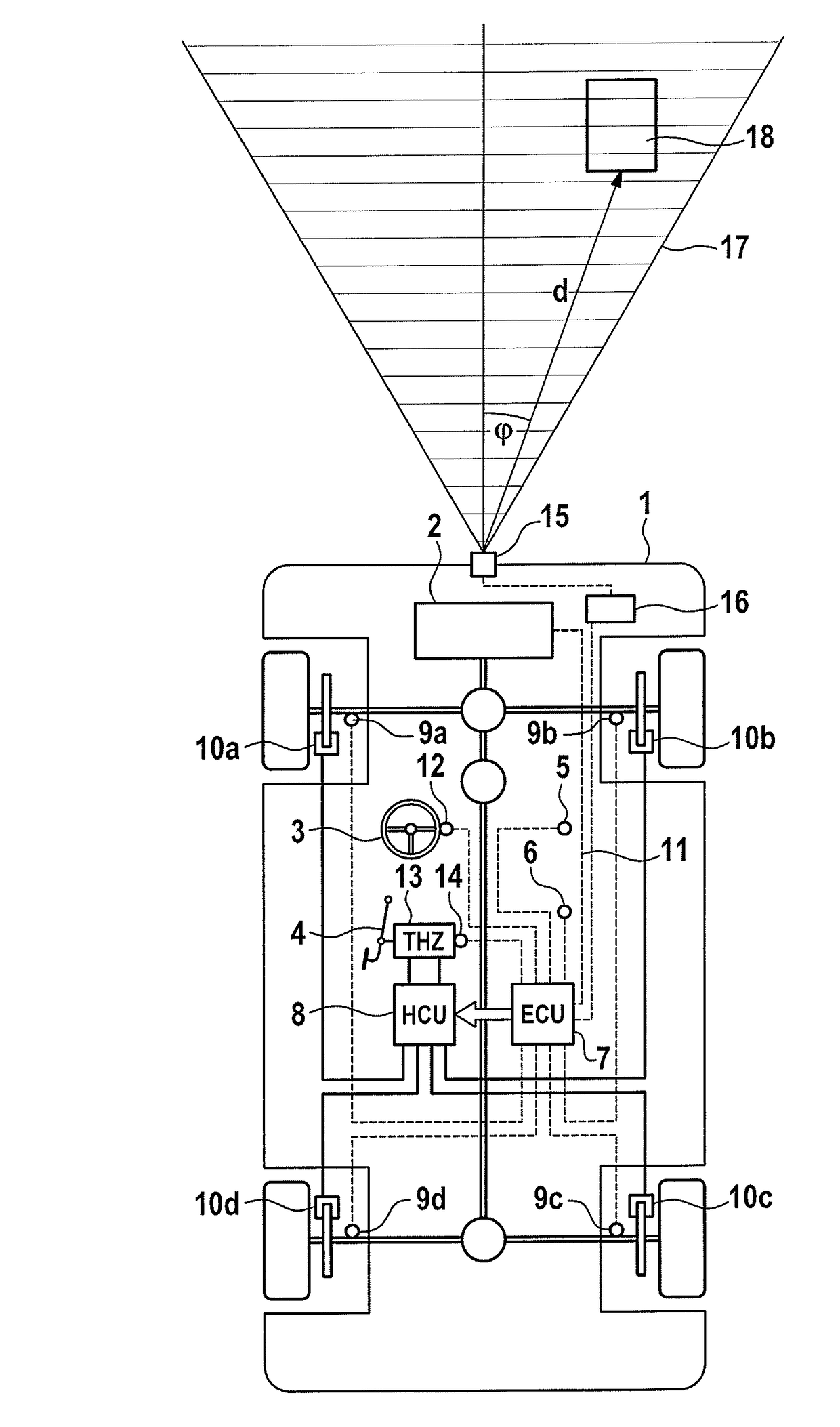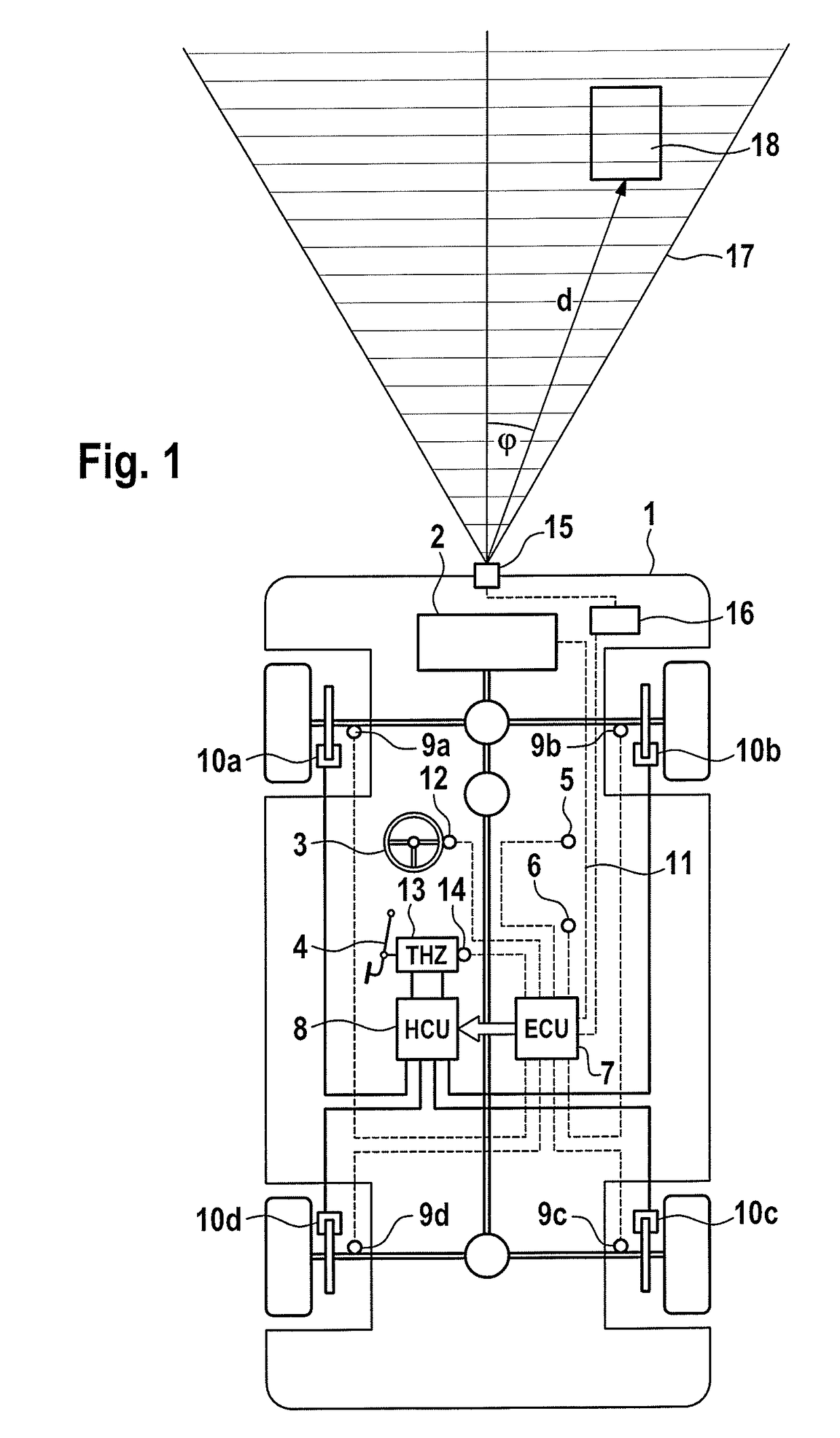Method for regulating driving stability
a technology of driving stability and electronic control device, which is applied in the direction of control device, driver input parameter, vehicle components, etc., can solve the problems that steering input can give rise to violent vehicle reactions, and achieve the effect of improving further the assistan
- Summary
- Abstract
- Description
- Claims
- Application Information
AI Technical Summary
Benefits of technology
Problems solved by technology
Method used
Image
Examples
Embodiment Construction
[0029]FIG. 1 shows a schematic illustration of a motor vehicle 1 which is suitable for carrying out the method according to an aspect of the invention. Said motor vehicle 1 has a drive engine 2 which drives at least some of the wheels of the vehicle, a steering wheel 3, a brake pedal 4, which is connected to a tandem master cylinder (THZ), 13, and four wheel brakes 10a-10d which can be activated individually. The method according to an aspect of the invention can be carried out even if only some of the vehicle wheels are driven. In addition to or as an alternative to hydraulic friction brakes it is also possible to use friction brakes which can be actuated electro mechanically on one, several or all of the wheels as wheel brakes. According to one alternative embodiment of the invention, the vehicle has an electric drive, and the braking torque at at least one wheel is generated at least partially by the electric machine or machines operated as a generator.
[0030]For the sensing of ve...
PUM
 Login to View More
Login to View More Abstract
Description
Claims
Application Information
 Login to View More
Login to View More - R&D
- Intellectual Property
- Life Sciences
- Materials
- Tech Scout
- Unparalleled Data Quality
- Higher Quality Content
- 60% Fewer Hallucinations
Browse by: Latest US Patents, China's latest patents, Technical Efficacy Thesaurus, Application Domain, Technology Topic, Popular Technical Reports.
© 2025 PatSnap. All rights reserved.Legal|Privacy policy|Modern Slavery Act Transparency Statement|Sitemap|About US| Contact US: help@patsnap.com



